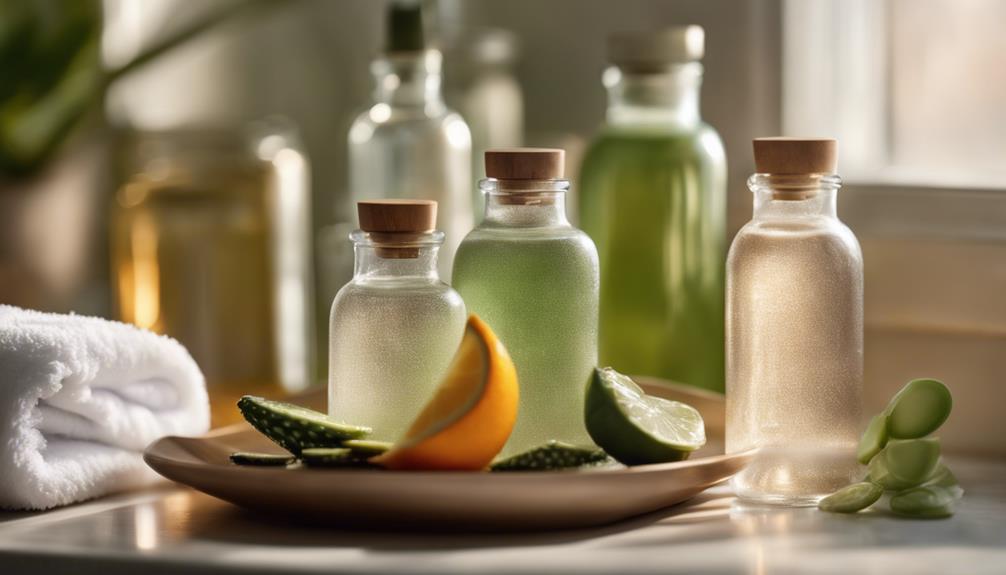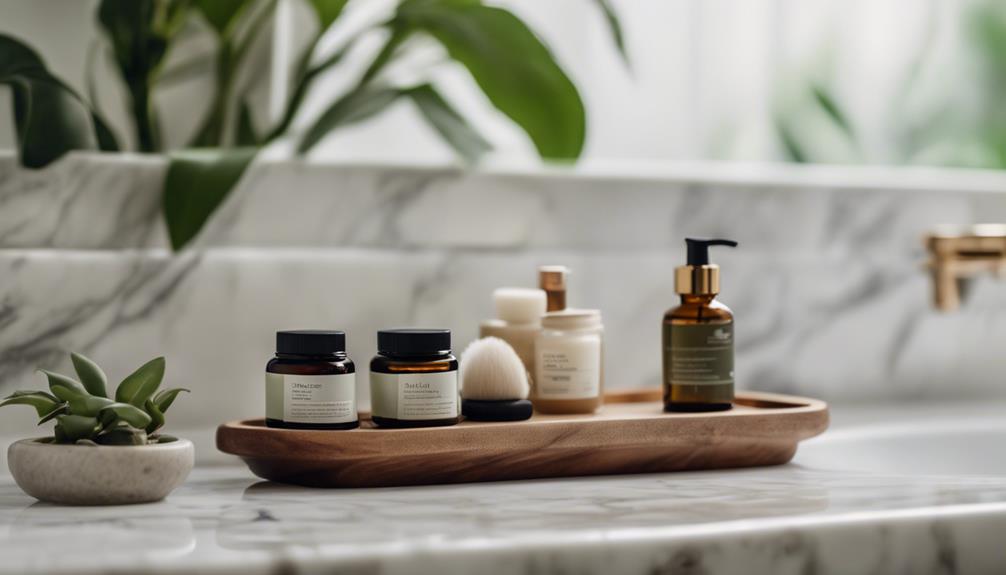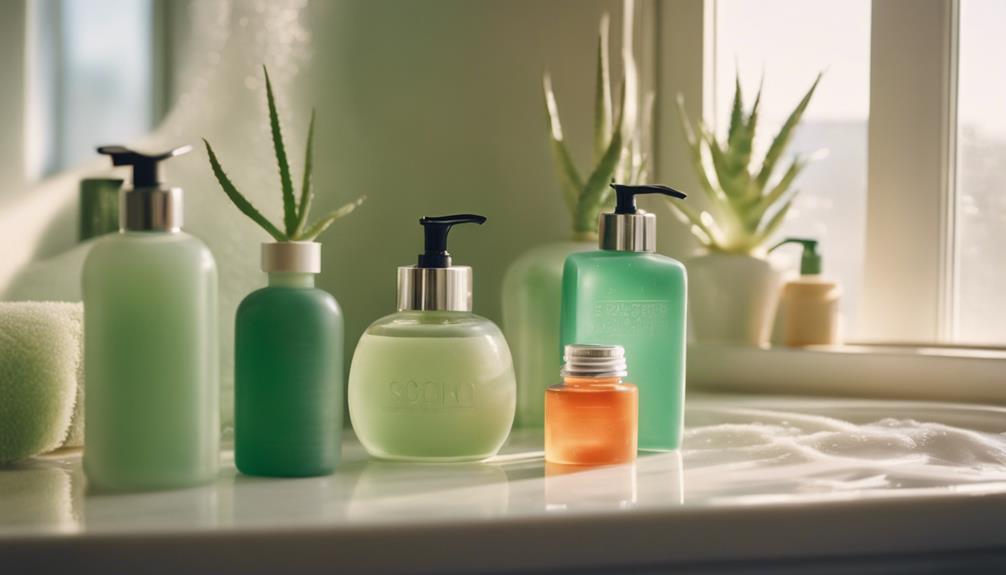Your daily skincare routine should consist of cleansing, toning, and moisturizing both in the morning and evening. Start your day with a suitable cleanser to eliminate impurities from your skin. Then, use a toner to balance your skin’s pH levels and keep it hydrated. For nighttime, cleanse your face again, apply any specialized treatments, and finish off with moisturizer. Remember to always wear sunscreen in the morning to shield your skin from UV damage. Tailor your regimen according to your skin’s requirements and monitor any changes. There are a variety of options you can explore to further improve your skincare routine.
Key Takeaways
- Start your skincare routine with cleansing to remove dirt and impurities, ideally twice daily for optimal skin health.
- Follow cleansing with toning to balance pH levels and provide hydration, enhancing overall skin texture.
- Apply targeted treatments, such as serums, after toning to address specific skin concerns like acne or aging.
- Moisturize to lock in hydration, choosing products based on your skin type for best results.
Skin Care Steps
Your skincare routine should focus on three essential steps: cleansing, toning, and moisturizing, which you should perform twice daily for the best results.
Start with cleansing, as it removes dirt, oil, and impurities from your skin. Choose a gentle cleanser suited for your skin type to prevent clogged pores and breakouts.
Next, incorporate toning into your routine. Toning helps balance your skin's pH and provides extra hydration, prepping your skin for better absorption of subsequent products. Look for toners with soothing active ingredients that cater to your skin's specific needs.
Morning Skincare Routine

When it comes to your morning skincare routine, choosing the right cleanser is vital for kickstarting your day.
You can't skip sunscreen, either; it's essential for protecting your skin from harmful UV rays.
Let's explore how to select the best products and understand why sunscreen is a must.
Cleanser Selection Tips
Choosing the right morning cleanser can set the tone for a rejuvenating skincare routine that keeps your skin balanced and clean. When selecting your cleanser, consider your skin type and specific needs.
For oily skin, go for a gel-based cleanser that effectively removes excess sebum without stripping your skin. If you have dry skin, a cream-based cleanser can provide the necessary hydration to maintain your skin's moisture barrier.
If you're dealing with acne-prone skin, look for skincare products that contain salicylic acid, which helps to clear breakouts. Additionally, make certain your cleanser is non-comedogenic to prevent clogged pores, vital for both oily and acne-prone skin types.
If you wear makeup or sunscreen, consider the double cleansing method. Start with an oil-based cleanser to break down those products, followed by a gentle foaming cleanser for a thorough clean.
Importance of Sunscreen
Protecting your skin with sunscreen every morning is essential for preventing damage from harmful UV rays and maintaining a healthy complexion. Using a broad-spectrum sunscreen with at least SPF 30 helps shield your skin from both UVA and UVB rays, reducing the risk of skin cancer and premature aging.
Regular application of sunscreen not only protects against burns but also combats the development of dark spots and uneven skin tone caused by sun exposure. By making sunscreen a non-negotiable part of your morning routine, you considerably lower your chances of developing hyperpigmentation and maintaining your skin's natural radiance.
It's important to remember that sunscreen needs to be reapplied every two hours, especially if you're spending time outdoors or sweating. This consistent protection helps maintain skin elasticity, preventing fine lines and wrinkles from forming over time.
Incorporating sunscreen into your daily regimen is one of the most effective ways to invest in your skin's health. So, don't skip this vital step—your future self will thank you for the youthful glow and smooth texture you'll keep for years to come!
Evening Skincare Routine
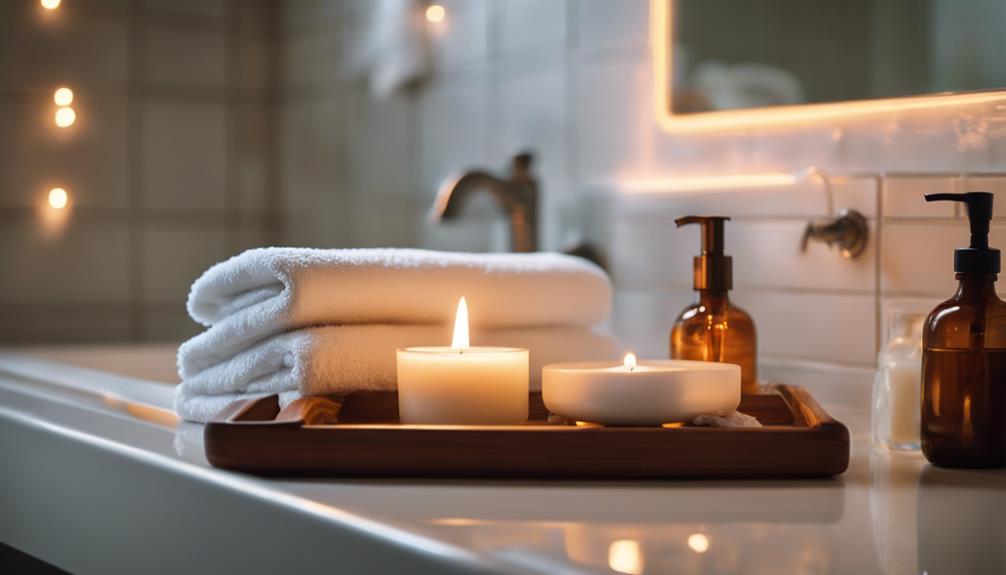
An effective evening skincare routine starts with a gentle cleanser to remove makeup, dirt, and impurities from your skin. This initial step guarantees a clean slate for the rest of your skincare products. If you've worn heavy makeup or sunscreen, consider double cleansing—first with an oil-based cleanser, then with a water-based one to thoroughly cleanse.
After cleansing, apply a toner. This helps to balance your skin's pH, provides hydration, and prepares your skin for better absorption of the products to follow.
Next, use targeted serums tailored to your specific skin concerns, like aging or acne. Look for ingredients like retinol or hyaluronic acid to help address these issues effectively.
Cleansing Techniques

Cleansing is a vital step in your skincare routine, as it sets the foundation for healthy skin.
You'll want to choose the right type of cleanser and stick to a consistent cleansing schedule to keep your skin clear and radiant.
Let's explore the importance of cleansing, the different types of cleansers available, and how often you should wash your face for the best results.
Importance of Cleansing
Regularly cleansing your skin is essential for removing dirt, oil, and impurities that can lead to breakouts. Cleansing should be part of your daily routine, ideally done twice a day.
Start by rinsing your face with lukewarm water to open up your pores, making it easier for a gentle cleanser to do its job. Choosing the right cleanser is vital; opt for a gel-based cleanser if you have oily skin and a cream-based one if your skin is dry.
When you apply the cleanser, use circular motions for about 30 seconds, paying extra attention to areas prone to oil buildup, like your T-zone. This technique helps dislodge trapped impurities, leaving your skin feeling fresh and clean.
After massaging the cleanser, be sure to rinse thoroughly. Any leftover residue can contribute to dullness and excessive oiliness, counteracting the benefits of cleansing.
By sticking to this routine, you not only maintain clear skin but also enhance its overall texture and vibrancy, preventing future breakouts and keeping your complexion healthy.
Types of Cleansers
Choosing the right type of cleanser is essential for effectively addressing your skin's unique needs and concerns. Each type of cleanser serves a specific purpose, so understanding them can help you make the best choice.
If you have oily or acne-prone skin, gel cleansers are your go-to. They remove excess oil and impurities without stripping your skin's natural moisture.
For those with dry or sensitive skin, cream cleansers provide hydration and nourishment while gently cleansing away dirt and makeup.
If you prefer a revitalizing wash, foaming cleansers create a rich lather and are ideal for combination to oily skin types.
Oil cleansers work wonders for all skin types, dissolving makeup and excess sebum, making them an excellent first step in a double cleansing routine.
If you're looking for a quick and convenient option, micellar water is a gentle, water-based choice that lifts away dirt and makeup without the need for rinsing. It's especially suitable for sensitive skin, allowing for easy and effective cleansing on the go.
Cleansing Frequency Recommendations
To maintain healthy skin, aim to cleanse your face twice a day—once in the morning and once before bed. This routine helps to remove impurities like dirt, oil, and makeup, keeping your skin fresh and clear.
Cleansing consistently is essential for preventing clogged pores and breakouts, which can lead to a dull complexion.
Here are some tips for effective cleansing:
- Choose the Right Cleanser: Use a gentle foaming cleanser for oily or acne-prone skin to remove excess oil without stripping moisture. For dry skin, opt for cream-based cleansers that provide hydration while eliminating impurities.
- Consider Double Cleansing: If you wear heavy makeup or sunscreen, double cleansing is beneficial. Start with an oil-based cleanser to break down makeup, followed by a water-based cleanser for thorough cleansing.
- Stay Consistent: Stick to your cleansing routine day and night. This consistency not only helps to keep your skin free of impurities but also enhances overall skin health and hydration.
Key Ingredients
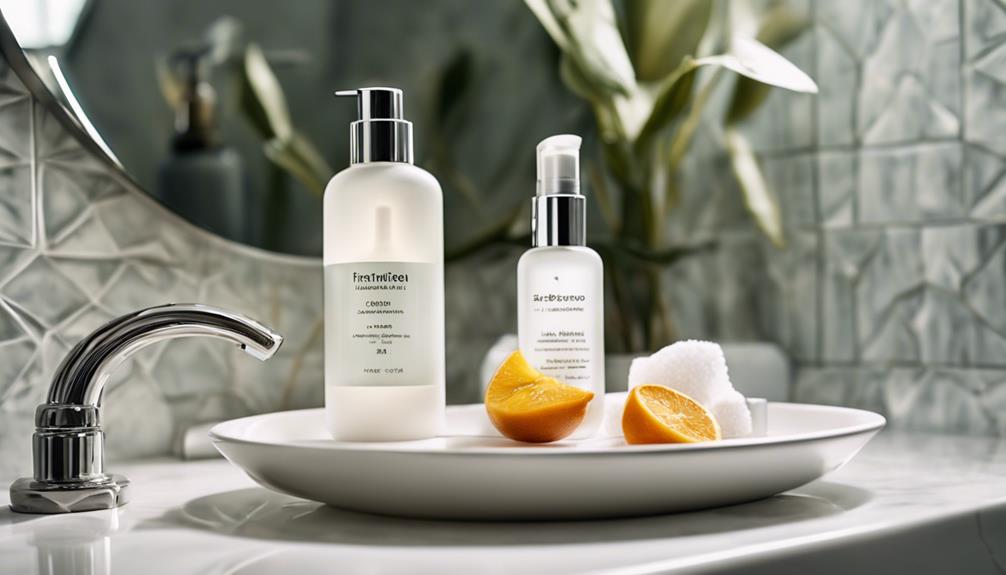
Key ingredients like salicylic acid and hyaluronic acid play essential roles in transforming your skincare routine for healthier, more radiant skin. Understanding these ingredients can help you choose the right products for your needs.
| Ingredient | Benefits |
|---|---|
| Salicylic Acid | Penetrates pores, clears acne, and prevents breakouts. |
| Hyaluronic Acid | Holds up to 1,000 times its weight in water, hydrating skin. |
| Glycolic Acid | Exfoliates dead skin cells, improving texture and brightness. |
| Retinol | Stimulates collagen, reduces fine lines, and boosts cell turnover. |
| Niacinamide | Enhances skin barrier, evens skin tone, and minimizes pores. |
Incorporating these ingredients into your routine can lead to visible improvements. Salicylic acid is vital for acne-prone skin, while hyaluronic acid guarantees hydration and plumpness. Glycolic acid offers gentle exfoliation, promoting a smoother complexion. Retinol's powerful effects on anti-aging make it a must-have for mature skin, and niacinamide helps regulate oil and reduce the appearance of pores. By selecting products with these key ingredients, you're setting yourself up for success in achieving glowing skin.
Customizing Your Routine
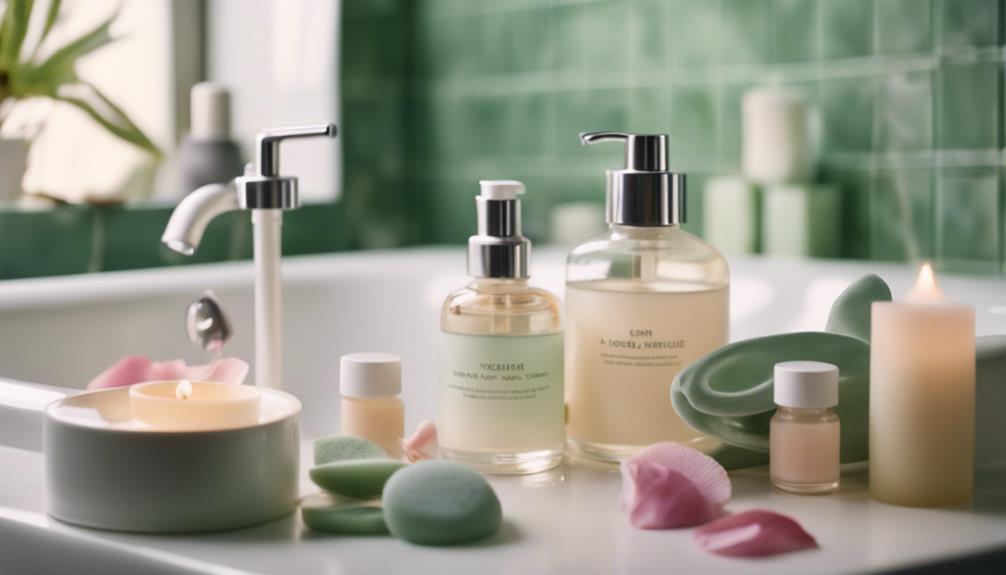
Customizing your skincare routine guarantees you're effectively addressing your unique skin concerns and needs. Start by identifying your skin type—normal, dry, oily, combination, or sensitive. This helps you select products that cater specifically to your skin's needs.
Here are three key steps to contemplate:
- Incorporate Beneficial Ingredients: Choose ingredients that target your specific skin needs. For example, use salicylic acid for acne-prone skin or hyaluronic acid for hydration in dry skin.
- Adjust Your Routine Seasonally: Your skin's requirements can change with the seasons. Opt for heavier moisturizers in winter and lighter formulas in summer to match environmental conditions.
- Follow the Right Order of Application: Apply products in the correct order—lighter products like serums should go on before heavier creams. This maximizes absorption and effectiveness.
Addressing Skin Concerns
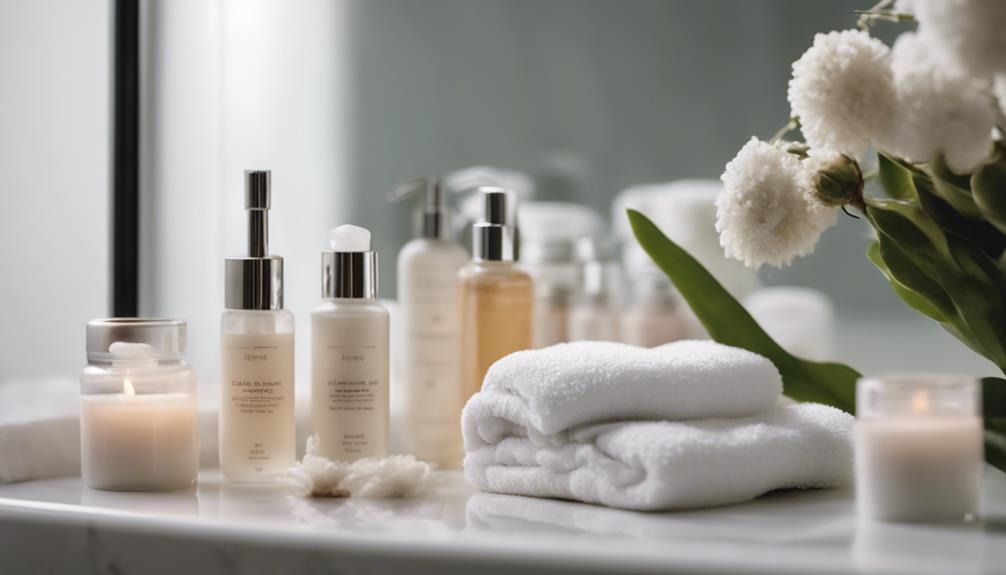
Addressing specific skin concerns is essential for achieving the healthy, radiant complexion you desire. If you're battling acne, consider incorporating salicylic acid or benzoyl peroxide into your routine. These ingredients effectively clear pores and reduce inflammation linked to breakouts.
For hyperpigmentation, look for products containing vitamin C, licorice root, or niacinamide. They promote an even skin tone over time by targeting dark spots.
If redness or rosacea is an issue, choose calming ingredients like aloe vera, chamomile, or green tea. These soothing agents help reduce irritation and inflammation.
To minimize large pores, utilize clay masks or products with retinoids. These options promote exfoliation and enhance cell turnover, leading to a smoother texture.
Don't forget about hydration! If dryness is a concern, opt for moisturizers with hyaluronic acid and glycerin. These ingredients attract and retain moisture, ensuring your skin remains plump and hydrated.
Professional Treatments
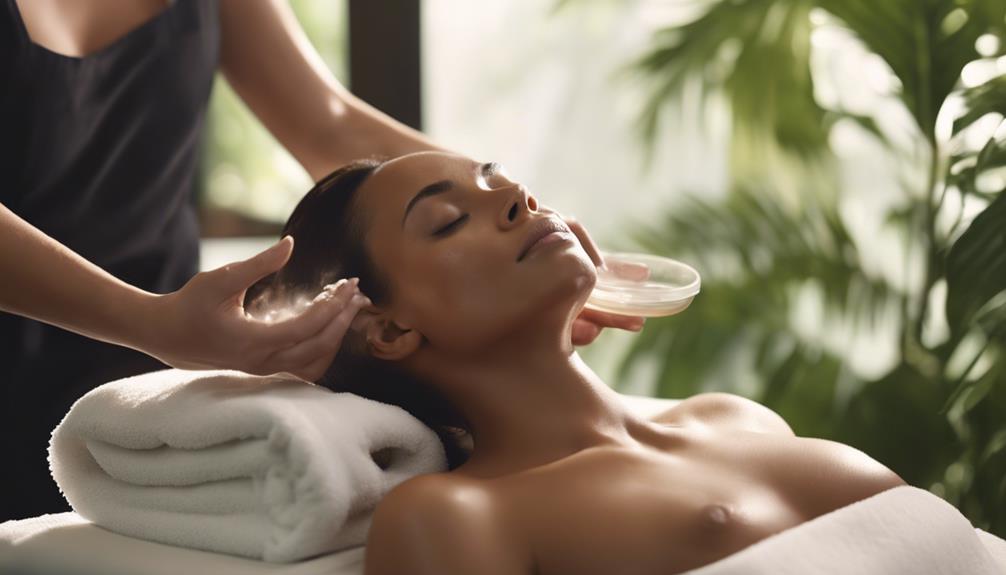
For those looking to take their skincare to the next level, professional treatments offer targeted solutions that can effectively tackle various skin concerns. These treatments not only enhance your at-home routine but provide deeper, customized care.
Here are three popular options:
- Chemical Peels: These treatments remove the outer layer of dead skin cells, improving skin texture and tone. They promote cell turnover and can considerably reduce the appearance of fine lines and blemishes.
- Microdermabrasion: Using fine crystals or a diamond-tipped wand, this non-invasive procedure exfoliates the skin, helping to diminish age spots and dullness while revealing a smoother complexion.
- Facials: Designed for specific skin concerns like acne or aging, facials involve deep cleansing, exfoliation, and targeted masks that rejuvenate your skin.
Regular professional treatments can complement your at-home maintenance, offering personalized advice from certified estheticians.
Treatment plans often include a series of sessions tailored to your individual skin type and concerns, ensuring you achieve ideal results. By integrating these professional options into your regimen, you'll see a notable improvement in your skin's health and appearance.
Additional Tips
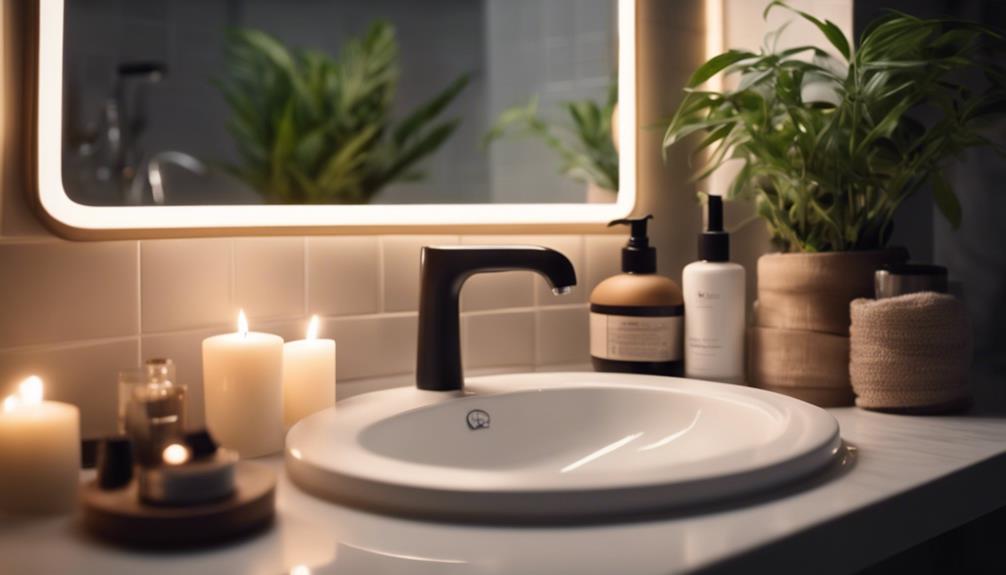
To achieve the best results from your skincare routine, consider these essential tips that can enhance your efforts and promote healthier skin.
First, never skip your sun protection. Applying a broad-spectrum SPF of at least 30 daily is vital to shield your skin from harmful UV damage and combat visible signs of skin aging.
Incorporate gentle exfoliation into your routine 1-3 times per week. This can improve your skin texture and encourage cell turnover, reducing dullness and uneven tone.
When choosing products, always match them to your specific skin type. If you have oily skin, opt for oil-free formulations; if your skin is dry, choose rich creams that provide moisture and hydration.
Keeping a skincare journal can also be beneficial. Track product effectiveness and note any changes in your skin over time, helping you adjust your routine as needed.
Lastly, don't forget the basics: stay hydrated by drinking plenty of water and eat a balanced diet rich in antioxidants. This will greatly impact your skin health and appearance, leaving you with a radiant complexion.
Can I Use the Evening Skincare Routine Steps as Part of My Step Skincare Routine?
Yes, you can use the nightly skincare routine steps as part of your overall skincare routine. However, be sure to choose products suitable for daytime use, such as a lighter moisturizer and sunscreen. It’s important to adapt your routine to meet the specific needs of your skin throughout the day.
Conclusion
In the journey to radiant skin, consistency is your compass.
By carefully following your morning and evening routines, and tailoring them to your unique needs, you'll not only address concerns but also reveal your best self.
Remember, nurturing your skin isn't just a regimen; it's an act of self-love.
So, embrace this daily ritual and watch as your skin transforms, reflecting the confidence that lies within you—because you truly deserve it.
